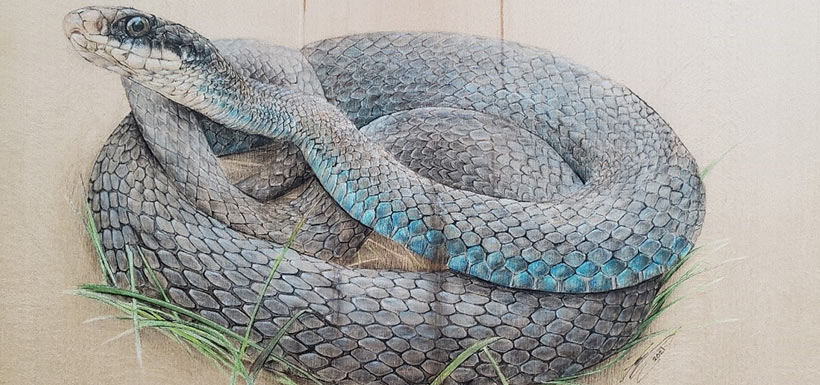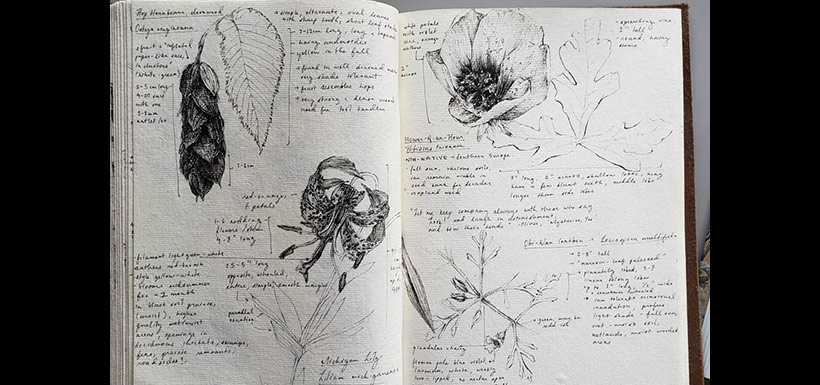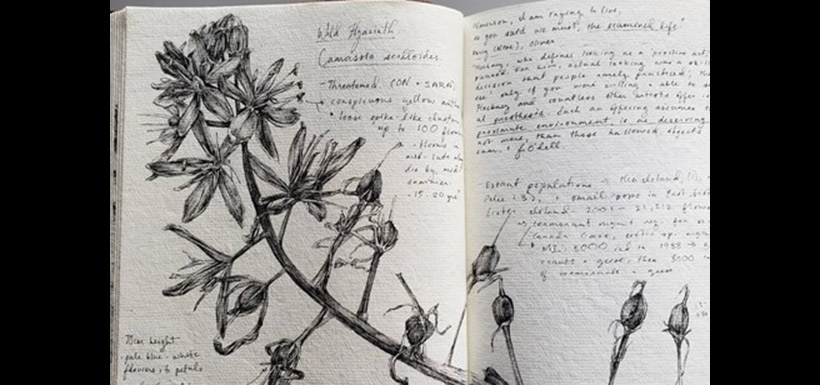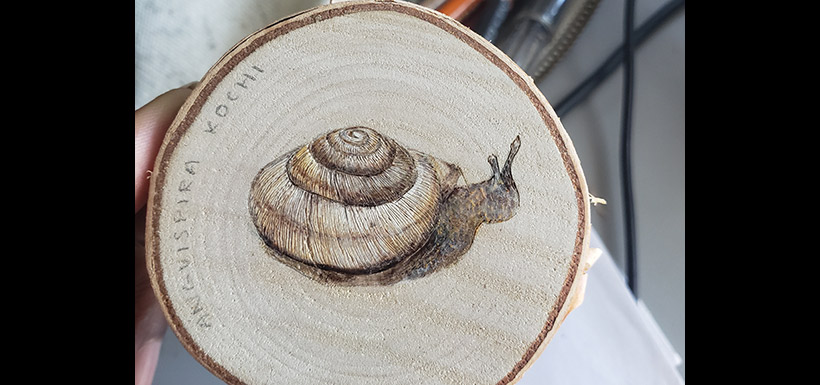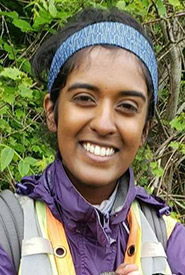Cockroaches and colours: Exercises in attention on Pelee Island
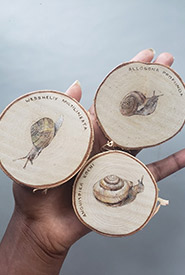
Woodburnings of some my favourite species on Pelee Island: the eastern banded tigersnail, broad-banded forestsnail, and striped whitelip. These snails are all nationally endangered and threatened by a range of factors including climate change, habitat loss and competition from introduced snails and slugs. (Photo by Hashveenah Manoharan/NCC intern)
On one of my first days working for the Nature Conservancy of Canada as conservation intern on Pelee Island, a cockroach had nestled itself into my copy of Mary Oliver’s collection of poems, Devotions. As a lifelong urbanite, my instinct was to pitch the whole book across the room, maybe even grab my things and flee the island, cursing all critters, never to return.
Mary Oliver disagreed. I recalled reading her poem Hum the day before, where she declares “I think there isn’t anything in this world I don’t / admire. If there is, I don’t know what it is. I / haven’t met it yet. Nor expect to.” And taking her words under consideration, the intruder wasn’t a pest but the native Pennsylvania wood cockroach, which upon closer inspection sported lovely patterning across its his wings.
Over the coming months, I’d eventually become familiar with all the critters that inhabited my cabin, their behaviours and comings-and-goings, no longer flinching at their presence. Growing up in fear of all creepy-crawlies, I thought I’d never lose my skepticism. I’ve learned a lot working as a conservation technician on Pelee Island this summer, but mostly how to pause, reject discomfort, summon curiosity and pay attention.
The dilemma of attention
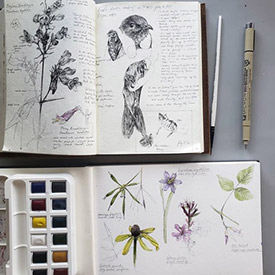
Pen doodles of foxglove beardtongue and purple martin bird banding with the Pelee Island Bird Observatory. Watercolour paintings of sweet cicely, gray-headed coneflower, stout blue-eyed grass, winged loosestrife and hog peanut. (Photo by Hashveenah Manoharan/NCC intern)
The southernmost inhabited point of Canada, Pelee Island is home to globally rare habitats and species. It’s a birding hot spot and houses snakes, salamanders and plants that can’t be found elsewhere in the country. Here, I regularly encounter species that render my trusty field guides useless. The sheer quantity of things to notice and learn was overwhelming at first, and clashed completely with the screen-centred life I had become accustomed to while quarantining in the city. Operating on internet-mode, my attention span lasted only as long as it took a webpage to load. I was battling the dilemma of attention that plagues many of us that live backyard-less in cities, far from the nearest forest or wetland.
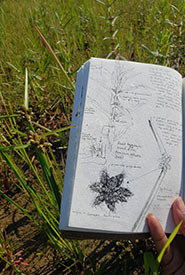
The invasive bog bulrush growing next to one of Canada’s few populations of the endangered grand redstem. Management of invasive species like bog bulrush is a critical part of NCC’s stewardship work. (Photo by Hashveenah Manoharan/NCC intern)
Pelee Island’s lively, unfamiliar, buzzing ecosystems were a shock to my system. I was aware of Mary’s instructions to pay attention to the minute details of nature, that documenting these small miraculous encounters “isn’t a contest but the doorway into thanks.” Jenny O’Dell, artist and author of How To Do Nothing: Resisting the Attention Economy, put it well when she compared spending time on her phone to being outdoors, claiming “[that] tiny, glowing world of metrics cannot compare to this one, which speaks to me instead in breezes, light and shadow, and the unruly, indescribable detail of the real.”
Art as attention
Using art to document my observations was first and foremost an exercise in revelry. I don’t know if there’s any greater way to develop the muscle of attention than artwork. The act of rendering demands an exploration of colour, shape, light, form, behaviour, biology. It’s a way to both absorb the complexity of the whole ecosystem and digest the details of every individual component.
Beyond the merits of art for developing an appreciation for the natural world, it’s an excellent way to study and learn the minute details that separate a wild strawberry from a wood strawberry, or a blue ash from a green ash. In a digital environment, where there are so many claims to our time, exercises in attention are rare and increasingly important. Once we begin paying attention to nature in this capacity, are we not more likely to be in awe? To understand? To protect? To steward? In her poem Yes! No!, Mary writes: “To pay attention, this is our endless and proper work.” As I return to the city, I look forward to activating the muscle of attention in every nook and cranny I can find.
Check out some of my other drawings and art below (click to enlarge each photo in the gallery):

